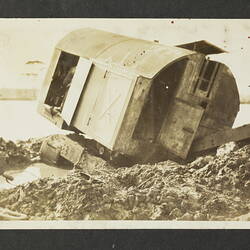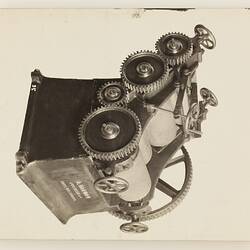At the age of 21, Alfred Thomas Harman arrived in Australia in 1885 following an argument with his father, Alfred Hugh Harman, founder of the Ilford film business in Britain. After a failed farming venture near Melbourne, he used his engineering training to establish a general engineering firm in Port Melbourne making varied products including steam winches and cranes. In 1920, A.T. Harman & Sons made its first excavator, a rail-mounted unit for the Brisbane City Council. Larger steam-operated dragline excavators were made in the 1920s for the Victorian River & Water Supply Commission. After surviving the Depression by selling used machinery and developing a patented turbine furnace that burned less fuel, Alfred T. Harman handed control of the firm to his son Alfred H. Harman in 1934. The firm's large equipment was produced almost totally in-house. Harman even designed a diesel engine but this was not put into volume production.
By this time steam powered equipment was being replaced by petrol and diesel engines. Winches were also an important product line. From 1925, the Models E, D and C type excavators were introduced. The Model ED appeared in 1945. By 1947 A.T. Harman was manufacturing Ruston-Bucyrus products beginning with the 15-B excavator. New Harman designs included the 9C, 15D and 20E. By 1960 Harman was importing Swedish Kockums excavators but the local models could still be purchased, often mounted on Foden trucks. The firm was bought by Kockums in 1962 and this led to new models such as the Kockums-Harman KL-225 and KL-250, often using Scania engines. Competition from imported, cheaper hydraulic excavators and the cost of new model development eventually led to the closure of the firm in 1975.
More Information
-
Keywords
-
Authors
-
Article types




















